You are here
APU Researchers And Staff Received 7 Awards for Innovation at ITEX ‘23
Students and lecturers shared 'Golden and Silver Moments' with their designs Waste Heat Energy Harvesting System To Generate Electrical Power From Automobile Exhaust Gas With Enhanced Efficiency, Alzhimex, Mavi Box Hub Machine Vision With Autonomous Drones, Rescue AI, Rambutan Peel as a Water-based Drilling Fluid Additive, MedAI and E-Wall.
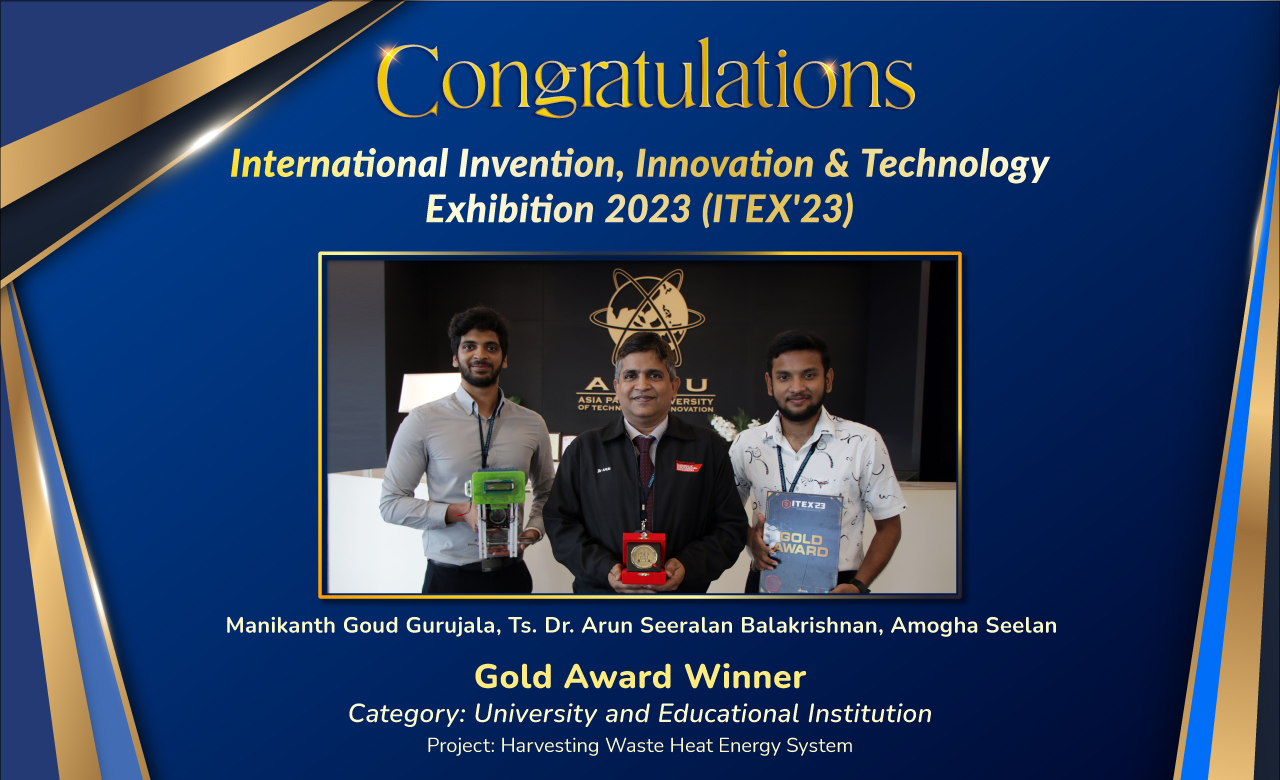 From left:Manikanth Goud Gurujala, Ts. Dr. Arun Seeralan Balakrishnan, and Amogha Seelan showed their prototypes and the Gold medal they received at ITEX’23.
From left:Manikanth Goud Gurujala, Ts. Dr. Arun Seeralan Balakrishnan, and Amogha Seelan showed their prototypes and the Gold medal they received at ITEX’23.
The world is changing at a rapid speed and keeping up requires innovation. In the future, we will see solutions to environmental issues as well as even more innovation in a wide range of fields from technology to healthcare to education.
So, Asia Pacific University of Technology & Innovation (APU) has prepared our students for the future by teaching them to be resilient and equipped with cutting-edge technology. They will be the ones to drive future innovation!
APU sent several groups to the International Invention, Innovation & Technology Exhibition 2023 (ITEX'23) to commercialise their prototype ideas, explore new initiatives, and seek feedback from investors so that their inventions might serve society.
During the competition, APU team received one Gold medal and six Silver medals for their designs Waste Heat Energy Harvesting System To Generate Electrical Power From Automobile Exhaust Gas With Enhanced Efficiency, Alzhimex, Mavi Box Hub Machine Vision With Autonomous Drones, Rescue AI, Rambutan Peel as a Water-based Drilling Fluid Additive, MedAI and E-Wall.
The Gold medal was awarded to the Waste Heat Energy Harvesting System developed by Senior Lecturer Ts. Dr. Arun Seeralan Balakrishnan and two Mechatronics students, Amogha Seelan and Manikanth Goud Gurujala.
“ITEX is the perfect platform to reveal new product developments. Investors can use this platform to find new investors and persuade them to fund their projects,” said Ts. Dr. Arun.
“Winning the gold medal award by the APU team demonstrates to business and industry that we, as a team, are producing calibrated young engineers who will soon serve society.”
 When fitted on a commercial or private vehicle, this prototype may charge the battery utilising heat energy from the exhaust.
When fitted on a commercial or private vehicle, this prototype may charge the battery utilising heat energy from the exhaust.
Ts. Dr. Arun is the main inventor of the harvesting heat energy system using TEGs with Heat Pipes, and two of his students supported him in competing as a team in the ITEX’23 competition, where they earned the Gold medal in the University and Educational Institution category.
According to Amogha Seelan and Manikanth Goud Gurujala, as students, they learned a lot from participating in ITEX’23, especially in terms of getting experience in developing mechanical prototypes that match the judges’ requirements.
“We learned a lot about conducting research and using engineering tools to analyse and develop a prototype that would assist us find a solution that will benefit society,” said Amogha.
Manikanth added, “As a team it was a great experience to showcase the project to the public and to the judging panel that our project meets the expected criteria. The award means a lot to us, and it is an excellent acknowledgment of our efforts.”
TEGs and heat pipes are already on the market, but their study focuses on keeping the temperature on the chilly side by utilising heat pipes properly.
TEGs have the ability to generate voltage and current when there is a temperature differential on both sides (hot and cold). So, utilising heat pipes containing water, the heat energy from the exhaust gas is absorbed to keep the temperature on the cold side of TEG around 30 degrees Celsius.
Furthermore, they extended their research by using Nanofluids in heat pipes by simulation process using Ansys workbench software, and this contribution related to ‘harvesting heat energy system from the exhaust gas of automobiles’ that reduces the temperature that has been thrown out as a waste to our environment and reduces the CO2 given as a waste to the atmosphere.
The best of the rest
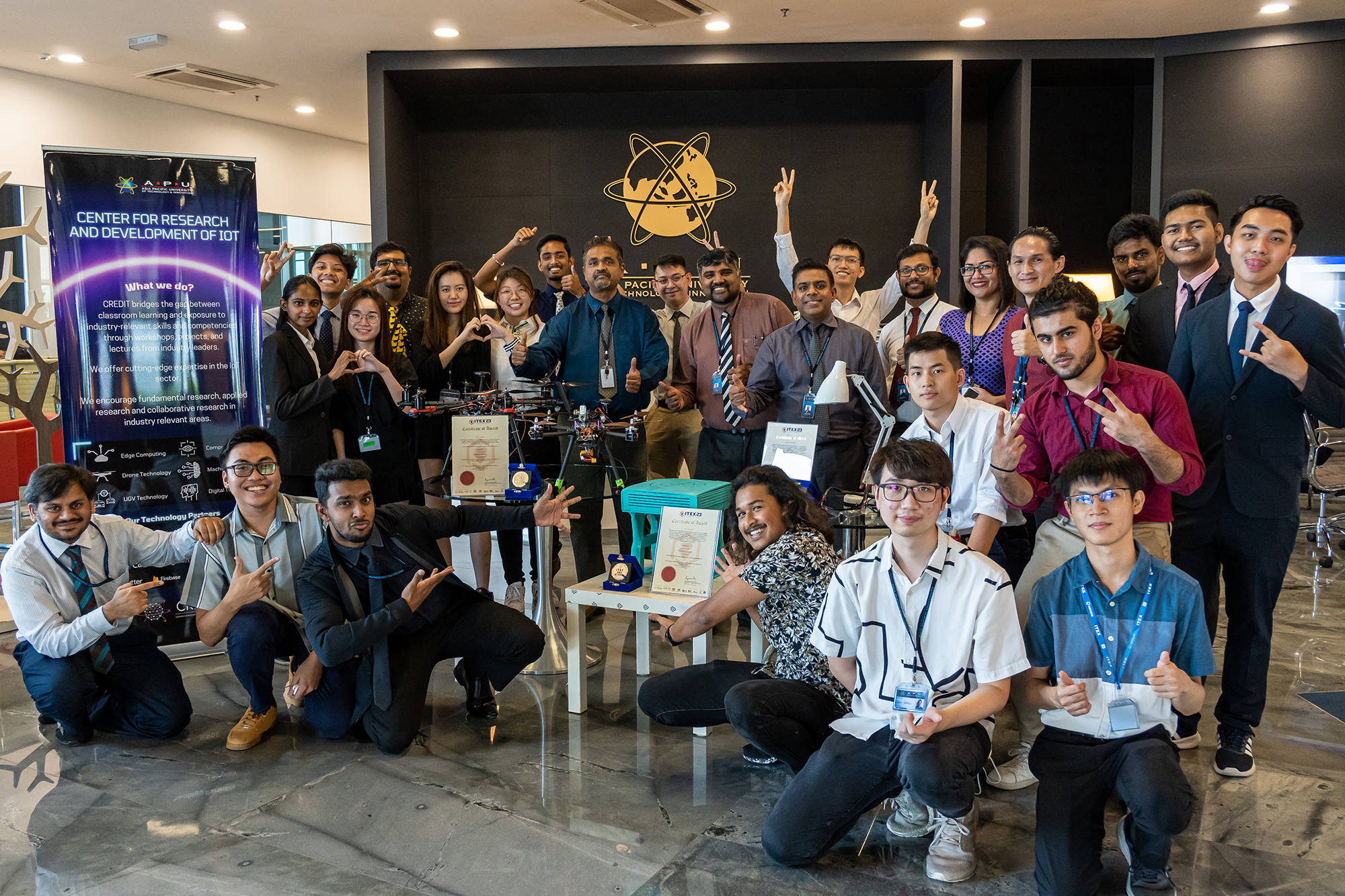 APU CREDIT Team with (middle) Head School of Engineering (SoE) Assoc. Prof. Ir. Dr. Siva Kumar Sivanesan, Head of CREDIT Dipl-Ing. Ir. Narendran Ramasenderan, Chief Innovation & Enterprise Officer Prof. Ir. Eur. Ing. Ts. Dr. Vinesh Thiruchelvam, Ir. Ts. Dr. Alexander Chee Hon Cheong and Ir. Ts. Dr. Yvette Shaan-Li Susiapan.
APU CREDIT Team with (middle) Head School of Engineering (SoE) Assoc. Prof. Ir. Dr. Siva Kumar Sivanesan, Head of CREDIT Dipl-Ing. Ir. Narendran Ramasenderan, Chief Innovation & Enterprise Officer Prof. Ir. Eur. Ing. Ts. Dr. Vinesh Thiruchelvam, Ir. Ts. Dr. Alexander Chee Hon Cheong and Ir. Ts. Dr. Yvette Shaan-Li Susiapan.
Meanwhile, APU team from the Centre of Research and Development IOT (CREDIT) earned three Silvers awards at ITEX’23, demonstrating the team’s relentless pursuit of excellence and commitment to pushing the boundaries of technological innovation.
The team presented three ground-breaking prototypes, each targeting a different category — automation and manufacturing, environment and energy, and medical health.
Stepping up to the challenge was Head School of Engineering (SoE) Assoc. Prof. Ir. Dr. Siva Kumar Sivanesan, Head of CREDIT Dipl-Ing. Ir. Narendran Ramasenderan, Assoc. Prof. Ts. Dr. Sathish Kumar Selva Perumal, Ir. Ts. Dr. Alexander Chee Hon Cheong, Ir. Ts. Dr. Yvette Shaan-Li Susiapan, Arvin Ravindran, Chung Yu Qin, Loke Kun Ming, Sharen Chrisan Fabian Perera, Adam Filchoir, Trishah Rajendran, Yee Han Xiang, Sio Ying Xuan, Krishna Ravinchandra, Ravivarma Sivathasan, Sarim Ahmed Khalil, Ryan Teo Han Ji, Rohit Thomas, Mohammad Owais Noor Butt, Hema Latha Krishna Nair, Ng Joo Kiat, Cheng Yi Heng, Chang Kah Boon, Tan Tze Ying, Cajun Tai Ka Joon, and Haresh Haridas.
Even though CREDIT is an independent research group, SOE academic staff members participate in it and train students for competition and research under the guidance of the Chief Innovation & Enterprise Officer Prof. Ir. Eur. Ing. Ts. Dr. Vinesh Thiruchelvam, and they successfully brought home three silver medals for Alzhimex, Mavi Box Hub Machine Vision With Autonomous Drones and Rescue AI.
The first group demonstrated the Alzhimex, a beacon of hope for Alzheimer’s patients that uses light therapy and gamification to slow cognitive loss. Alzhimex uses game interfaces to measure cognitive ability, spatial navigation, and memory retention by administering intermittent light therapy during the day and the critical hours after awakening and before sleeping.
The second group focuses on Mavi Box Hub Machine Vision With Autonomous Drones, a new machine vision system that is expected to revolutionise the manufacturing industry. MaviHub can detect manufacturing faults and harmful emissions such as carbon, methane, and ozone in real-time using a combination of static and dynamic cameras. This information is then compiled into a metaverse digital twin of the production floor, allowing for unprecedented oversight and control.
While the third group sends Rescue AI, the disaster metaverse uses long-range (LORA) sensors and drones to predict disaster events. Rescue AI, with the ability to simulate the scope and impact of a disaster up to 72 hours in advance, could be a game changer in disaster management. The computer-vision-equipped drones may reply to victims’ requests via a smartphone app and deliver medical supplies and food.
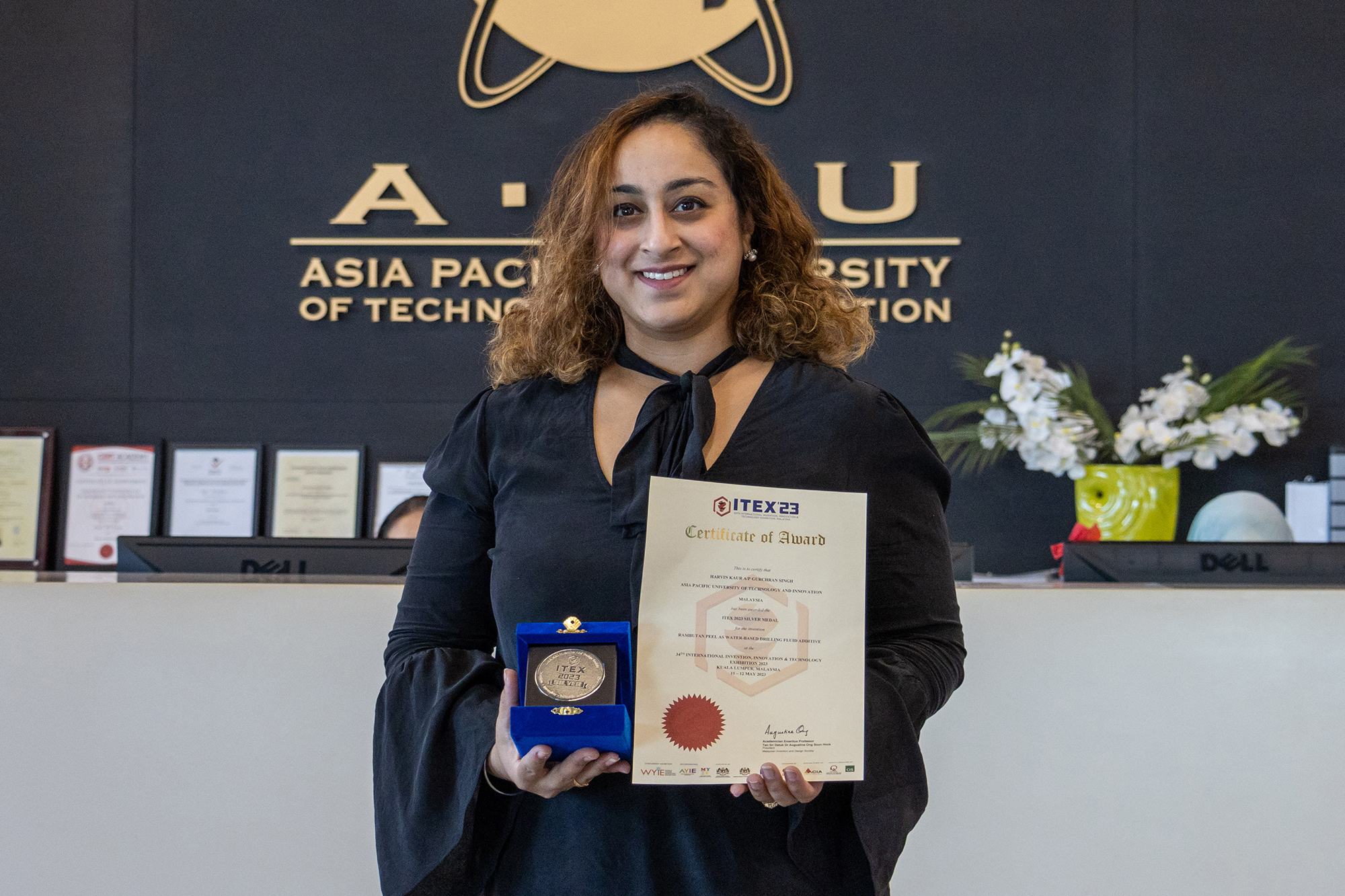 Ir. Eur. Ing. Ts. Dr. Harvin Kaur Gurchran Singh is an inspiration to other engineers and researchers, and she is sure to continue to make significant contributions in the years to come.
Ir. Eur. Ing. Ts. Dr. Harvin Kaur Gurchran Singh is an inspiration to other engineers and researchers, and she is sure to continue to make significant contributions in the years to come.
Ir. Eur. Ing. Ts. Dr. Harvin Kaur Gurchran Singh has made significant contributions to the field of drilling fluid additives and her work has been recognised with a Silver medal at ITEX’23.
Her research on the use of Rambutan Peel as a Water-based Drilling Fluid Additive has the potential to revolutionize the drilling industry, as it could lead to the development of more environmentally friendly and cost-effective drilling fluids.
Ir. Eur. Ing. Ts. Dr. Harvin’s research includes an experimental investigation of the usefulness of bio-degradable food waste products (Rambutan peel) as an ideal supplement for controlling mud rheological qualities because it not only works similarly to a synthetic drilling fluid but also has a low environmental impact.
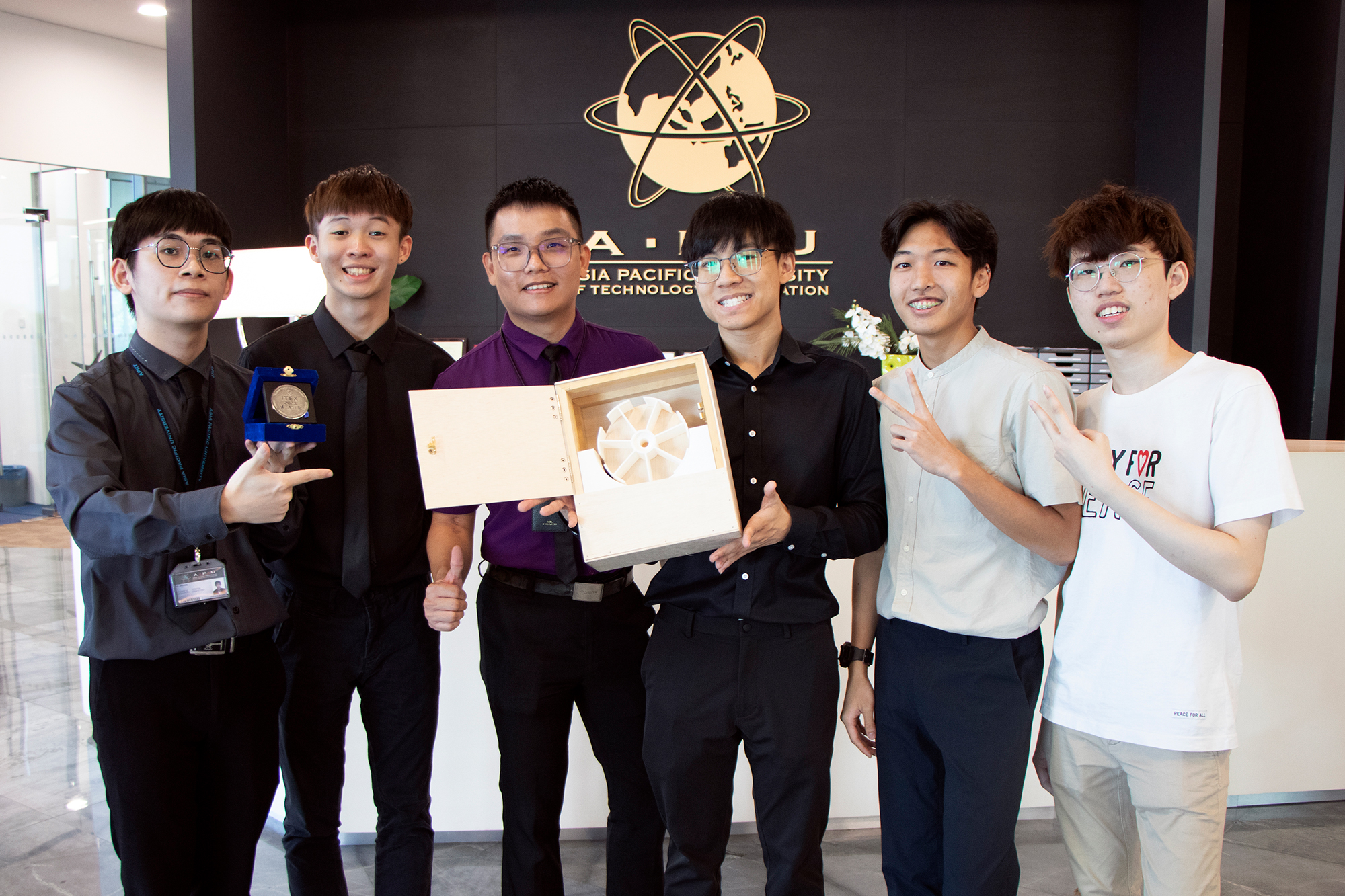 From left, Ng Jing Wei, Jason Seah, Ir. Eur. Ing. Ts. Dr. Lau Chee Yong, Goh Kwok Liang, Sean Tan Ming Yuan, and Matthew Lim Jian Le showed Silver's MedAI prototype.
From left, Ng Jing Wei, Jason Seah, Ir. Eur. Ing. Ts. Dr. Lau Chee Yong, Goh Kwok Liang, Sean Tan Ming Yuan, and Matthew Lim Jian Le showed Silver's MedAI prototype.
The team led by Ir. Eur. Ing. Ts. Dr. Lau Chee Yong, which comprised his student Ng Jing Wei, Goh Kwok Liang, Jason Seah, Matthew Lim Jian Le, and Sean Tan Ming Yuan, also won Silver for MedAI, a medication cabinet with built-in artificial intelligence.
MedAI’s main function is to export the medication at a predetermined time and remind the user to take it, considerably reducing the possibility of overdosing and medication forgetfulness by the user and is visible and configurable via mobile phone.
It can also remind the user to refill medication if it runs out, record the amount and time of medication consumption for later diagnosis and tracking, and save important data such as the user’s blood pressure and heart rate via specialised devices.
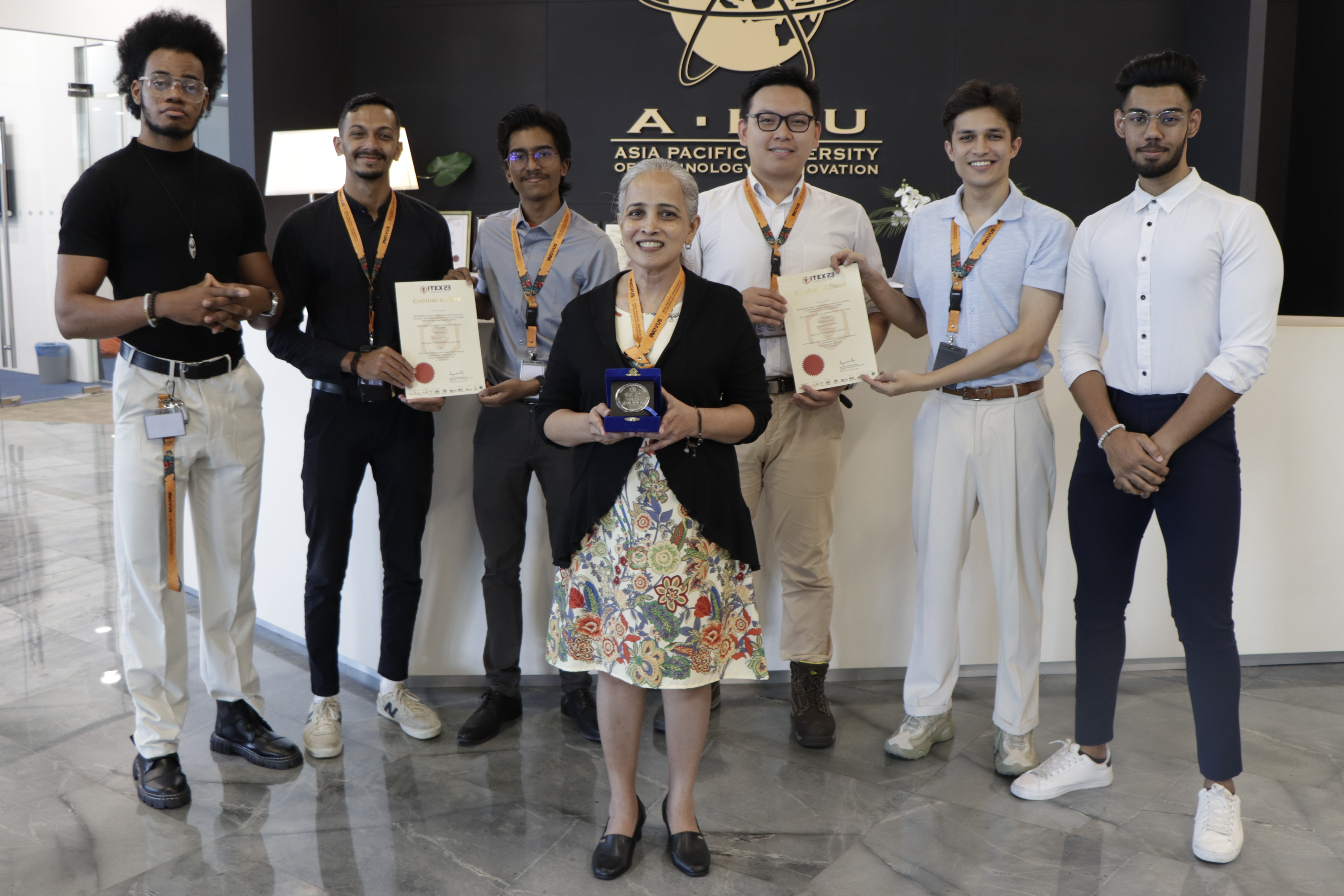 From left, Stephane Jean-Michel Benstrong, Ishaq Easa Muzammil, Dheneshwar Arasu, Ir. Jacqueline Lukose, Howard Young, Taimoor Khalid and Muhammad Abdool Hakim Lallmamode with their Silver medal and certificates.
From left, Stephane Jean-Michel Benstrong, Ishaq Easa Muzammil, Dheneshwar Arasu, Ir. Jacqueline Lukose, Howard Young, Taimoor Khalid and Muhammad Abdool Hakim Lallmamode with their Silver medal and certificates.
Team Innovus mentored by Ir. Jacqueline Lukose, which included Dheneshwar Arasu, Ishaq Easa Muzammil, Muhammad Abdool Hakim Lallmamode, Stephane Jean-Michel Benstrong, Howard Young, and Taimoor Khalid, was also awarded a Silver medal for their prototype, E-Wall.
E-Wall is a technology that uses an autonomous collecting platform to collect and automate the separation of e-waste. It collects e-waste using machine vision and a clever sorting system before transporting it to recycling centres. This method greatly lowers the likelihood of e-waste getting up in landfills and damaging the environment.
APU team’s success at ITEX’23 is a testament to the power of collaboration, innovation, and determination. By working together towards a shared goal, these brilliant minds have demonstrated what can be accomplished when they are unshakably dedicated to their work.
Their achievement is a shining example of the transformative power of technology, and it is sure to inspire others to follow in their footsteps.


